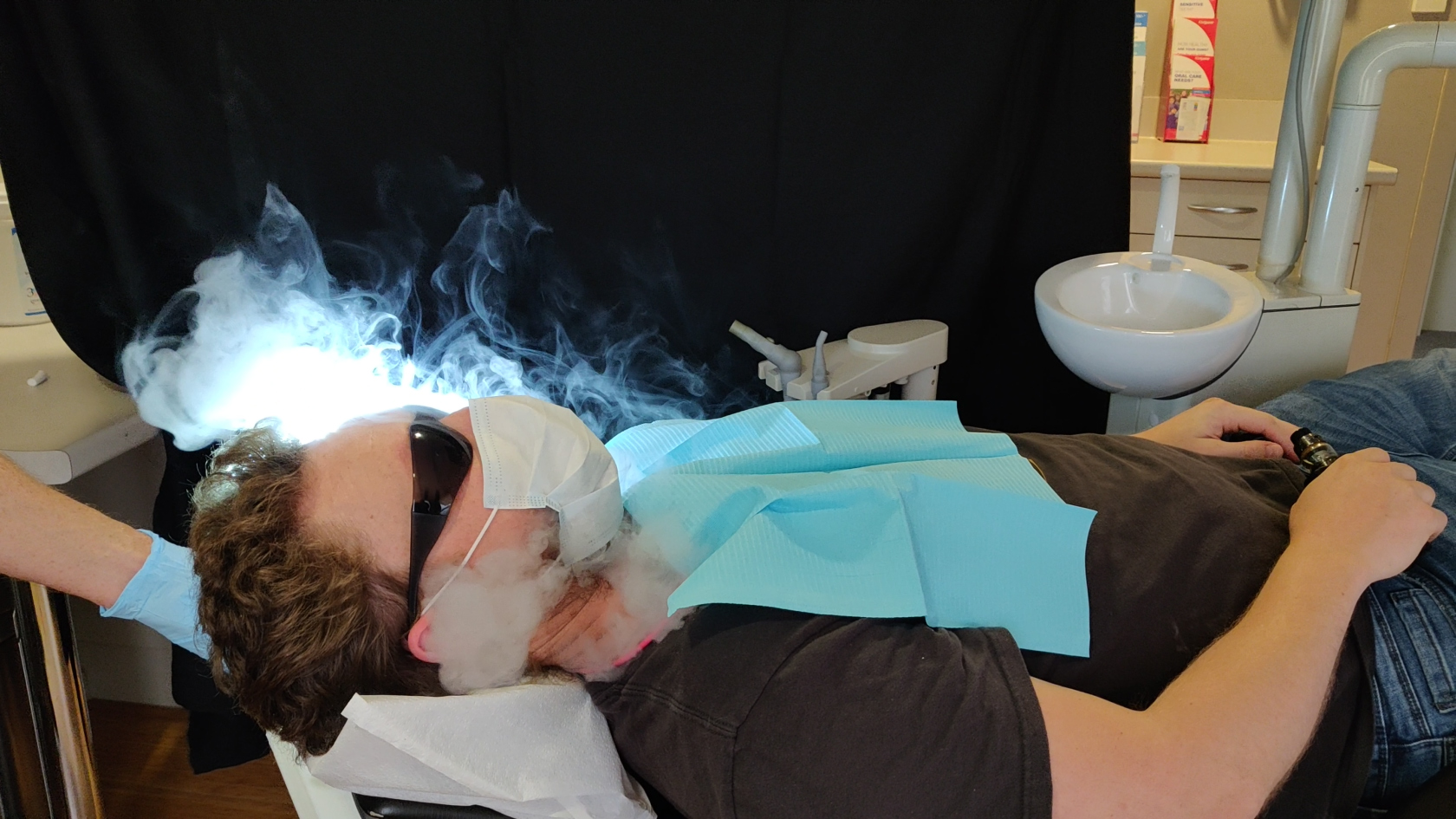Standard Precautions Aren’t Enough Anymore
The circumstances under which airborne transmission appears to have occurred include a combination of enclosed spaces, prolonged exposure to respiratory particles (30 minutes or more), and inadequate ventilation or air handling. If this sounds familiar, that’s probably because it’s the standard context for most dental appointments.
The implications of this finding also extend to wider aerosol control measures. Currently, HVE and rubber dams are considered sufficient standard control methods. While both are generally quite effective, they do result in one glaring flaw: patients can only breathe out their nose, meaning infected aerosols are passing straight into the environment and the breathing spaces of others present.
“In the healthcare setting, aerosol is used with respect to “aerosol-generating procedures” (e.g., intubation, bronchoscopy) that produce small droplets and particles and require distinct engineering controls to prevent occupational transmission of infectious pathogens like SARS-CoV-2.” – CDC Scientific Brief

A patient breathes out vape in a mask to show aerosol escape.
Engineering Controls are the Only Viable Solution
This means that aerosol generating procedures should only be performed with Engineering Controls in place, not just PPE controls like face masks. Are you unclear on the distinction between Engineering and PPE controls? We explain the differences and provide a customisable Dental Risk Management Plan template on our website.
Screening Won’t Work on the Asymptomatic
The current best estimate by the CDC is that asymptomatic patients account for around 40% of infections. It’s also the main risk in relying on screening and temperature checks in dental practices – asymptomatic people will pass right through these tests and into the dental chair.
Another important factor to consider now that businesses have largely reopened is that of liability, specifically owner liability regarding staff and patient safety. In the US alone, more than 2,000 lawsuits relating to COVID-19 have been filed in federal and state courts as of July. As the pandemic progresses, many legislative bodies are treating COVID-19 as any other employer health and safety risk to be managed and controlled. While closing your doors for several weeks can easily cost tens of thousands of dollars in lost revenue should transmission occur on the premises, the longer-term damage to a business’s reputation and patient trust may well be the real disaster.
If you’re looking for the evidence to make an informed decision, see for yourself in the video below:
Interested to learn more about Engineering controls and Rhondair Aerosol Capture System?
Visit our website here and download our free Aersol Risk Management Plan Template – Word Document you can add to your health and safety and risk mitigation plan.



